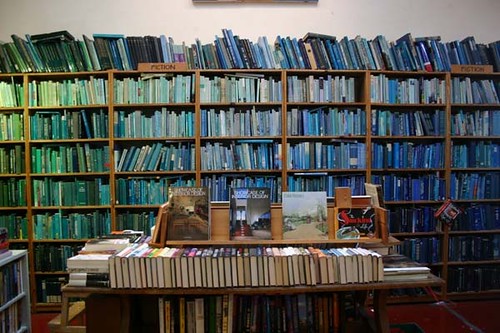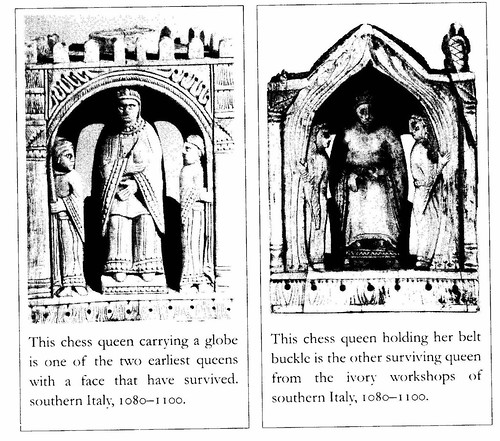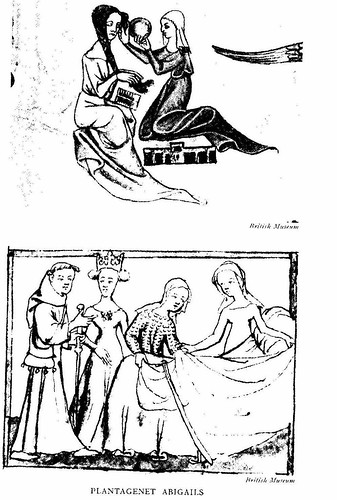This is a long post, but I think worth it, for the sheer driving anger that it expresses, and its wonderfully defamatory nature. It arose following a lawsuit over property on which John Horell was on the other side to the writer, Joan Armburgh.
But he had been raised by her mother, and she expected him consequently to take her side. The issue was around the parentage of two girls, which the claimant said were his wife's, while Joan believed they were his illegitimate daughters.
Joan Armburgh to John Horell, c. 1429-30
Bare friend in such manner wise as you have deserved, I greet you. For as much as it is not unknown to you and openly known in all the country, that your chief making has been through the manor of Radwinter, first by my lady mother's day and since in my time and notwithstanding that you, as a cuckoobird devouring the hedgesparrow when she hath bred him up and as an unkind bird that fouls his own nest, have laboured from that time unto this with my adversary John Sumpter and with them that have wedded his two bastard daughters, noising them all about the country for sisters and right heirs, there as you know well the contrary is true, so far forth to at you as the devil's child, father of falsehood, whose kind is always to do evil against good, has forsworn the divers times before escheators and justices to give the country false information that should pass between us in disinheriting of me and of my heirs of the moiety of the mother's inheritance in all that ever in you is, the which with the grace of God shall never lie in your power nor in no worthless fellows that have wedded those false bastards.
And besides this you have stirred mine adversaries to do strip and waste within my ground and to throw down my hedges and woods and especially the timber that groweth about in the garden, the which grieves me more than all the wrongs that they have done to me to this time, and have counselled them not to leave so much standing as pear trees nor apple trees nor any manner of trees that bear fruit and have a rejoicing in your heart to see the place at the utmost devoured and destroyed.
In so much that when you sit in taverns among your fellows you have a common byword in manner as a false prophet, saying that you hope to see the day that a hare sits upon the hearthstone of Radwinter hall, but I trust to God ere that manor that has been a habitation and dwelling place for many a worthy man of my ancestors from the Conquest to this time, and a long time before, be so desolate as you desire, that you will see my husband set up a pair of gallows within the same franchise for your neck, for those you curry be more able to dwell upon a bond tenement as their kin asks, not upon a real lordship, the which well shows by the destruction that they have done in the said manor, leaving not a stick standing upon the ground; I thank God I am strong enough to buy timber for a pair of gallows to hang you upon, and that you have well deserved it by the same token that you robbed two women of Sampford, which is well known, of the which, one of them you set upon a tree and that other you lay with against her will in the porter's house within the manor of Radwinter, for she should discover you.
Wherefore I trust to God that he will vouchsafe to give me power to serve you as the eagle serves his birds which he finds unkind and that will smite the dam with the bill and contrary to his own kind, for when an eagle has kept up his birds til they be somewhat mighty of themselves, he dresses their heads even against the sun
when it shines most bright and such as have been found kind to the dam and that look warily in the sun without any twinkling or blenching of their eye as their kind asks, he breeds them up until they be mighty enough of themselves to fly where they choose. And such as he has found unkind to the dam and that may not look against the sun without twinkling of their eye, as their kind would, he draws them out of his nest and throws them against the ground and breaks their necks.
This eagle in holy writ is likened to Christ who is father and mother to all Christian people. These birds are likened to the people here on earth, who ought all to be his children, the sun is likened to righteousness and truth and, like the eagle serves his unkind birds in manner and form as it is before rehearsed, right so the good Lord shall serve the unkind children of this world that will not look in the sun of righteousness nor go in the way of his commandments but rob and riven and do extortions and deprive men of their goods, their livelihoods and their lives with false fore swearing, he shall shorten their days and draw them out of their nests that they have been brought up in, that is for to say out of this world and throw them into the pit of hell.
And therefore by leave of that good Lord I take example of the eagle and for as much as you are like the eagle's bird that may not behold in the sun of righteousness, that is to say that you have made yourself blind through bribery and mead that you have taken from my adversaries and will not know the truth, but like an unkind bird have fouled the nest you were bred up in of a knave of a nought, that is to say, you have counselled my adversaries to distrain the manor of Radwinter as within rehearsed, the which manor was the cause of your trust and like a false cuckoobird you have laboured to devour your dam, that is to say, my mother and me, who have been mothers of your trust and your bringers up.
For anon after the death of my mother you stole away the moveable goods from Radwinter, that is to say, 'nete' and sheep and swine and household goods that should have been sold by her executors and used for her soul, and afterwards you had the management of Radwinter and Thycko and had as much of my goods as drew to the value of xl marks and falsely feigned general acquittance under my husband's seal and would never cease from that time to this with your false records, in hope to have disinherited me of my livelihood.
And therefore I give you my word that it shall not be long, though it costs me £40, but that I shall get me a judge to sit under commission on the franchise of Radwinter as I may and, if law will serve, with the grace of God you will be pulled out of the nest that you have gotten in your trust and laboured so sorely to destroy, and made to break your neck on a pair of gallows. I can say no more at this time, but I pray God send you what you have deserved, that is to say, a rope and a ladder.
(Chetham Mun.E.6.10(4); The Armburgh Papers, pp. 120-3)
My understanding is that women at this time, of her standing at least, would most often have dictated a letter to a scribe or clerk in their employ; just imagine her spitting it out - what a scene that must have been.
From Letters of Medieval Women, A. Crawford (ed) Sutton, 2002, Thrupp, p. 39-40. (I posted another letter here.)












